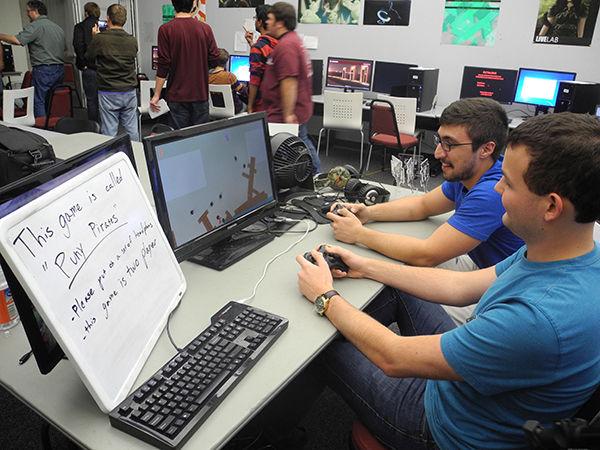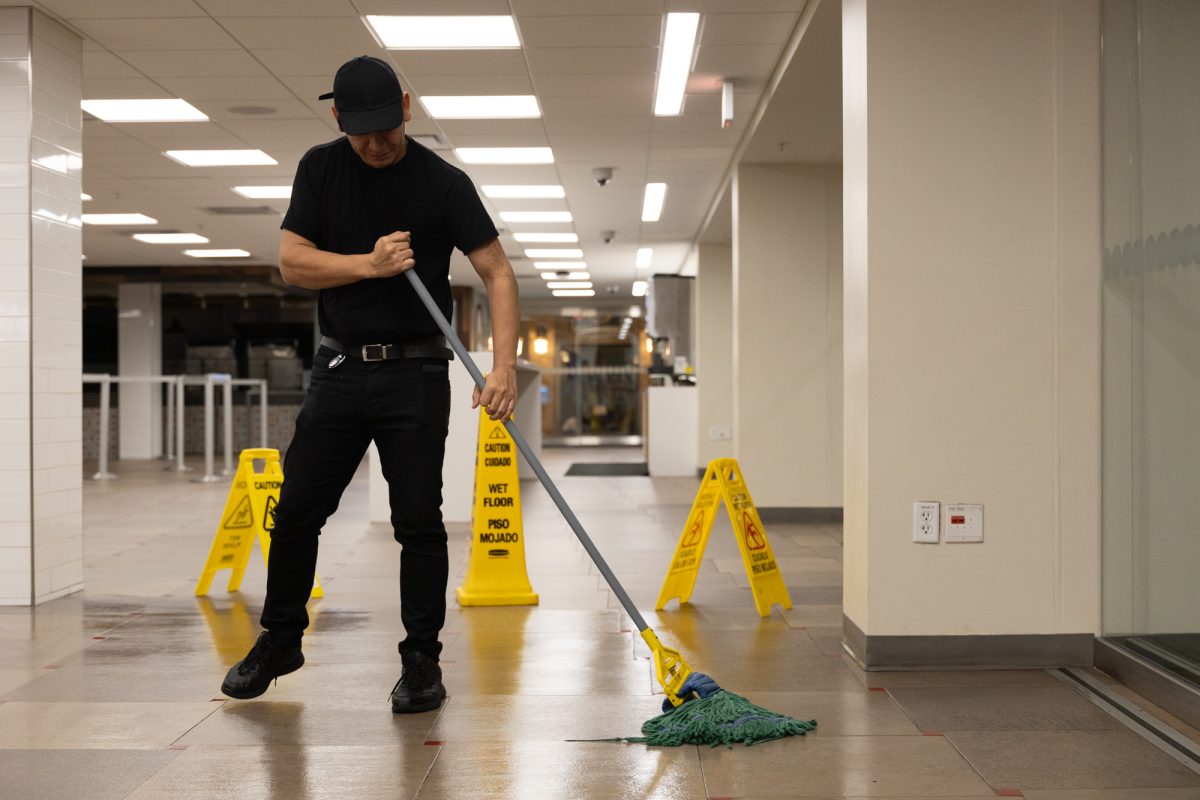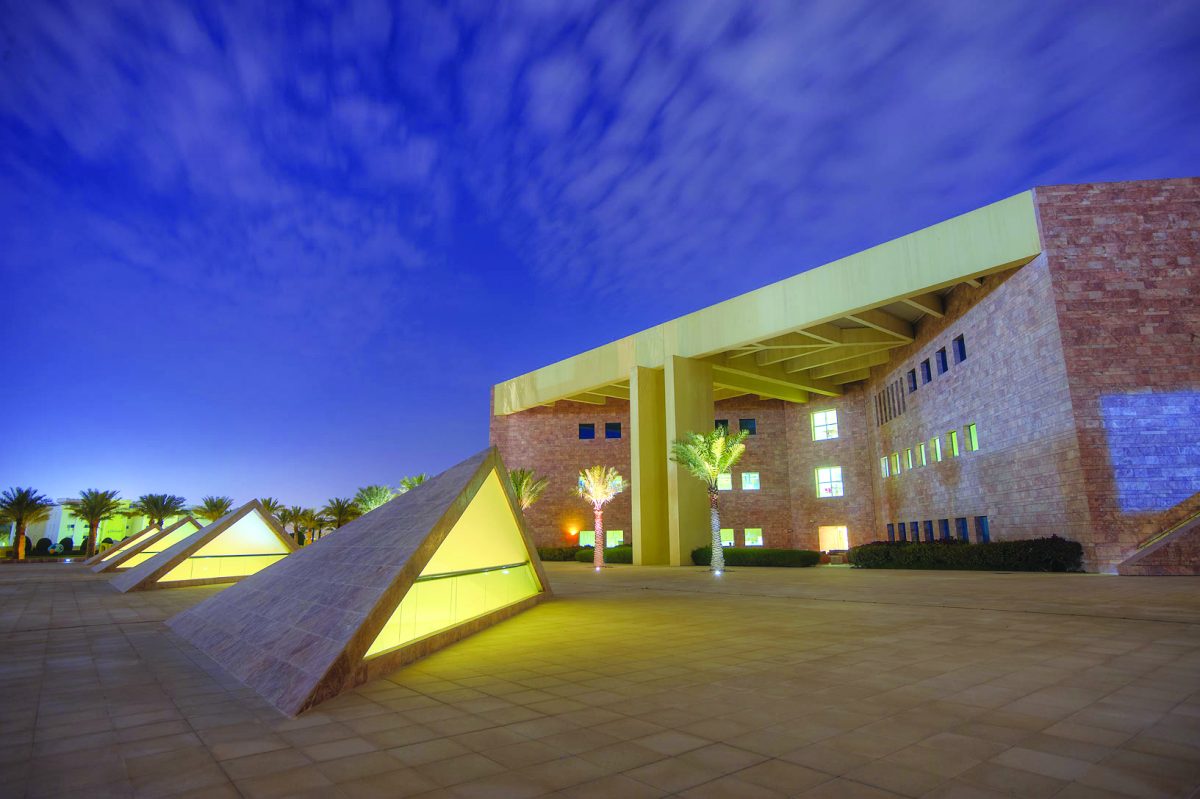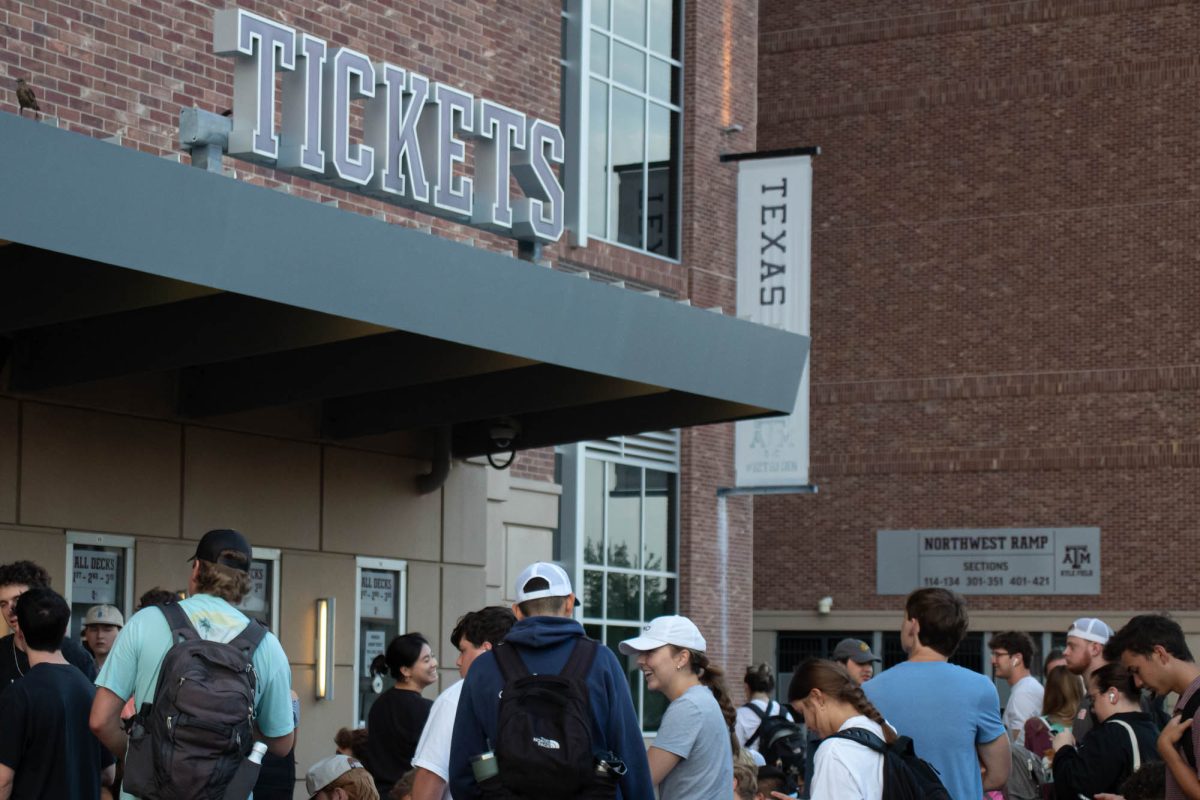Crumpled candy wrappers, empty energy drinks and water bottles litter the tables. Tired students rub their eyes and massage the kinks out of the back of their necks that they’ve developed after hours of staring at their computer screens. Forty-five hours, to be exact.
Beginning Friday night, 40 students worked tirelessly to develop their video games for Texas A&M’s first Game Jam. Students were tasked with creating a computer game within time limits centered on the theme of “water.”
Andre Thomas, founder of Live Lab, helped set up Game Jam, which he said was a great success.
Thomas said Live Lab took advantage of this year’s theme to talk about water issues.
“[We chose water] because it’s pretty close to home,” Thomas said. “There are water issues here in Texas. We had a couple guest speakers, one Friday evening, one Saturday morning, talk about water issues we’re having on a global scale as well as a local scale.”
Thomas said the competitors had the freedom to interpret water as they want to in their video games.
“There were no real guidelines other than every game they develop has to be publicly viewable,” Thomas said. “So we have children that help with the judging, so it has to be appropriate. That was the only requirement we had. Otherwise, you interpret the speaker’s message, the theme, however you want, and we’ll see what comes out.”
Students chose to participate in the event for a variety of reasons. Visualization sophomore Jacob Davis signed up to help prepare for his career and add to his portfolio.
“It’s kind of toward what my major is aimed at, which is gaming, so I figured it’d be a pretty good way to get some stuff in my portfolio, and have something to show people like, ‘Hey, I made this in 48 hours,’ so as to give them a scale on how qualified I am,” Davis said.
At the beginning, concerns about the event included worries about the time constraints, managing exhaustion and making sure that the end product is successful. Computer science senior Jordan Cazamias said his biggest worry was making sure the concept they chose was good enough to get them to the end.
“It’s certainly pretty difficult,” Cazamias said. “I think the biggest thing is probably just to make sure we don’t go off of a bad idea at the beginning, because if we’re in the middle and we realize we need to start all the way over, we’re kind of hosed because there’s just not enough time.”
After 45 intense hours, the students were told to step away from their keyboards and let judging begin.
Cazamias and his group’s game, Nimbus, had users operate a cloud that was manufactured by a corporation, and rain on several cities that need water. If players don’t get to the city in time, the city falls apart because of drought. If the player rains on the city too much, floods destroy the city. Facing other obstacles like smog, Cazamias’ group’s game fit into the theme of water. He said his group was happy with the end product.
“We have a solid core, some pretty engaging game play, at least we think so, so hopefully the rest of people see it as such,” Cazamias said. “We got most of what we wanted we couldn’t get everything, it’s only 45 hours and so we did our best, we learned a whole bunch and ultimately we had a good time.”
Computer science freshman Jonathan Burk and his group interpreted the water theme differently. Their game features a fish named Lord Swimmington who is swimming away from radioactive water. While they were happy with the end product, getting there wasn’t easy.
“We had a lot of graphics problems — trying to find images that were usable without copyrights and trying to make them look good,” Burk said. “We also had a lot of issues with making the background loop.”
Davis said the struggles faced by his group, which made a video game based on an explorer in a desert looking for water, came with managing exhaustion.
“Getting everything done in such a short time was clearly a challenge,” Davis said. “We were so tired that little things were impossible, so what seemed super simple, we’d make a dumb mistake and it wouldn’t work out because we weren’t focusing.”
A panel of 10 judges comprised of visitors from the faculty of Kansas State University and a local game developer assigned awards for Best Overall game, Best Sound, Best Gameplay, Best Art and Best Theme. The participants also tested each other’s games to decide which game deserved the Crowd Favorite Award.
Burk and the rest of his teammates put together a game, called Keep Swimming, that won Best Overall Game. The Crowd Favorite Award went to Marcos Alfonso and Joshua Strunk for their game Puny Pirates.
Win or lose, for students like Burk the competition was more about the learning experience than the prizes.
“We got a lot more than I thought we would and I learned a lot in the process,” Burk said. “I feel really good about it. It’s pretty nifty what we came up with.”
Participants in this year’s Game Jam test out their video game.
Photo by Katie Fuller
Mona Behl speaks at Game Jam about the worldwide water shortage.
Photo by Ateesh Tiwari
A&M’s first Game Jam raises water shortage awareness with video games
November 9, 2014

0
Donate to The Battalion
Your donation will support the student journalists of Texas A&M University - College Station. Your contribution will allow us to purchase equipment and cover our annual website hosting costs.
More to Discover








